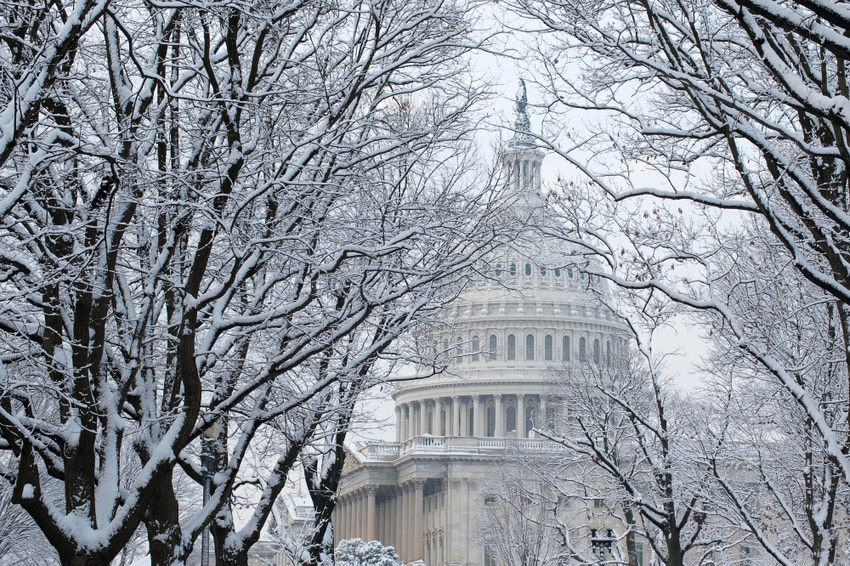The subtle debate behind the FCC's new broadband speed benchmark
The FCC moved to raise its "broadband" benchmark from 25/3 Mbit/s to 100/20 Mbit/s. But behind that action are ongoing debates over symmetrical speeds and the role of FWA and satellites.

The FCC voted this week to implement a 4x increase to its "broadband" benchmark, from 25/3 Mbit/s to 100/20 Mbit/s. But – as with everything in Washington, DC – there's plenty of backroom debate over the move.
In a release, the FCC explained that its latest report on broadband in the US "concludes that advanced telecommunications capability is not being deployed in a reasonable and timely fashion based on the total number of Americans."
The agency said that "fixed terrestrial broadband service" (which the agency said excludes satellite) has not been physically deployed to approximately 24 million Americans, including almost 28% of Americans in rural areas.
The FCC explained that its annual assessment of the broadband market stems from section 706 of the Telecommunications Act of 1996, which requires such reports. The agency also noted the act allows the FCC to create a definition for broadband – the last time the FCC did so was in 2015 when it set its benchmark at 25/3 Mbit/s.
"This fix is overdue," FCC Chairwoman Jessica Rosenworcel said in a statement discussing the agency's new 100/20 Mbit/s benchmark.
Regardless, the FCC's move won't have much of an immediate impact on American telecom users. As noted by Engadget, US Internet providers offering speeds under the new benchmark won't be able to call their services "broadband" on the new telecom information labels the FCC will soon begin requiring. However, providers are not required to hit the FCC's new 100/20 Mbit/s speeds.
Moreover, it will not impact the NTIA's massive $42.45 billion Broadband Equity, Access, and Deployment (BEAD) program, which already requires 100/20 Mbit/s speeds on networks receiving government subsidies.
And it's not final. According to Chairwoman Rosenworcel, the agency's new action "also sets a 1 Gbit/s / 500 Mbit/s long-term goal for broadband speeds to give stakeholders a collective goal towards which to strive – a better, faster, more robust system of communication for American consumers."
That said, there's more to the discussion.
Not too hot, not too cold
In filings ahead of the FCC's vote this week, a number of lobbyists debated whether the FCC should raise its speed benchmark. And if so, how?
"The commission must realize that raising the benchmark for what constitutes broadband will instantly widen the digital divide," wrote TechFreedom, a non-profit think tank. "If the FCC requires that future recipients of government funding build to this new spec ... progress in connecting rural America and tribal lands will slow, and money will flow to what previously were served areas, but are now being redefined to being unserved."
TechFreedom also noted that the new benchmark is primarily geared toward entertainment applications rather than telehealth or other Internet uses.
But most telecom lobbying organizations, from CTIA to NCTA, acknowledged a need to raise the "broadband" benchmark from 25/3 Mbit/s. But some disagreed over what the new standard should be.
"We believe the commission should be more ambitious" than 100/20 Mbit/s, wrote the Fiber Broadband Association, arguing that fiber operators currently offer 1 Gbit/s services to roughly one-half of US households. The FBA also urged regulators to make the benchmark symmetric – meaning, upload and download speed would be the same. The organization argued that the FCC should do so in part because "new technologies, including 8K video, virtual reality (VR) and augmented reality (AR) are driving future increases in the need for substantially greater downstream and upstream bandwidth."
But other lobbyists – such as those representing cable and fixed wireless providers – disagreed.
"Last year, 90 percent of new home broadband subscribers selected fixed wireless access (FWA) as their solution, even though symmetrical speeds are generally not attainable," wrote CTIA, which represents FWA providers like T-Mobile and Verizon. "Even as FWA speeds continue to improve, asymmetrical speeds remain the right balance."
Not surprisingly, those positions mostly align with the general networking capabilities of each organization's members. Fiber networks generally have the capability to support symmetric speeds, but cable and FWA networks do not.
The satellites
The FCC's definition of broadband shuns satellites at a time of frenzied investments in Internet services from space. Championed by Elon Musk's Starlink, companies ranging from Amazon to OneWeb to Telesat are planning similar low-Earth orbit (LEO) satellite constellations for space-based Internet.
Starlink's parent company – SpaceX – this week conducted another test of its massive Starlink rocket. That rocket is in part intended to launch Starlink's second generation satellites.
However, the FCC has excluded such satellite efforts from most of its broadband programs. For example, it rejected Starlink's application for government funding through its Rural Digital Opportunity Fund (RDOF) program.
"It is evident that fixed wireless access (FWA) offerings already compete aggressively with traditional wired broadband services, and LEO satellite-based services are poised to do the same. Accordingly, all three should be treated as robust rivals within a single 'home Internet' product market," wrote the Free State Foundation, another think tank.
According to FCC Commissioner Brendan Carr, a Republican, the agency specifically excludes Starlink from its overall efforts because he thinks President Biden dislikes SpaceX chief executive Elon Musk. "The Biden Administration is choosing to prioritize its political and ideological goals at the expense of connecting Americans," Carr alleges.
With its roughly 5,000 satellites, Starlink currently offers median speeds of around 64 Mbit/s, according to Ookla, and counts around 2.6 million customers globally.
About the Author(s)
You May Also Like




_International_Software_Products.jpeg?width=300&auto=webp&quality=80&disable=upscale)







